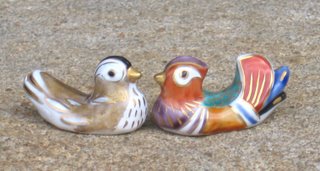 surprize visitor - such a cute yellow necktie for a poisonous snake We have never seen anything like this one in the last 17 years here in the mountains.  |
comments from friends
It has strong poison, even stronger than Mamushi, they say; but it's very gentle and rarely bite a person.
When my son was 11 years old, he had a couple of them in our garden in Matsue as his pets. He liked to play with them in a stream near by. At that time we had not known they were poisonous. They were just so gentle.
Their yellow color was much thinner than yours.
. . . . .
In ancient Greece snakes were seen as having the power to cure and heal - drawn from the idea that an old, dull-looking snake would shed its skin and emerge looking bright and healthy. Asklepios was the great healer, son of a god and a mor
tal woman. His "familiar" was the serpent, which gave him the wisdom to heal people. But when he went too far and revived a dead person he was sacrificed and sent into the heavens. His daughters Salus and Hygieia took up where he left off and maintained temples dedicated to the snakes. The Aesculapean Staff, with its intertwined snakes, remains the symbol of the medical profession.
- Shared at Joys of Japan -
Japanese Serpents
. By David Bituin .
:::::::::::::::::::::::::::::::::::::::::::::::::::::::::::::::::::::::::::::::::::::::::::::::::::::
Yamakagashi ヤマカガシ(山楝蛇、赤楝蛇)
Lives in the warmer parts of Japan.
関東地方の個体では斑紋がはっきりしているのに対し、
関西地方の個体ではややぼんやりとしており、
中国・四国地方の個体では濃紫色の個体が多い.
kagashi is an old Japanese word for SNAKE.
So this name says it is a "mountain snake", but in reality it is seldom found in high altitudes, but more near rivers and wetlands.
It feeds on frogs in the rice paddies. But with the recent decline of wet fields and frogs, this type of snake has also declined rapidly.
It is almost never seen in urban areas.
© More in the Japanese WIKIPEDIA !
Rhabdophis tigrinus
is a venomous colubrid snake found in East and Southeast Asia. No subspecies are currently recognized.
The dorsal color pattern is olive-drab green with black and bright orange crossbars or spots from the neck down the first third of the body. The belly is whitish. The average length is usually 60-100 cm.
When these snakes are challenged at cooler temperatures they tend to demonstrate passive anti-predator responses such as flattening their neck and body and lying still while at higher temperatures they more frequently flee instead.
© More in the WIKIPEDIA !
RHABDOPHIS TIGRINUS FORMOSANUS
Asian Tiger Snake 台灣赤煉蛇
Small to medium-sized snake; total length up to 100 cm.
Look at some scary photos :
source : www.snakesoftaiwan.com
:::::::::::::::::::::::::::::::::::::::::::::::::::::::::::::::::::::::::::::::::::::::::::::::::::::
. WKD : snake, serpent, hebi 蛇 .
. . . Read my Haiku Archives . . .
:::::::::::::::::::::::::::::::::::::::::::::::::::::::::::::::::::::::::::::::::::::::::::::::::::








2 comments:
shinshi 神使 messenger of god, divine messenger
kami no o-tsukai 神のお使い / 神の使い
.
https://japanshrinestemples.blogspot.com/2020/03/shinshi-otsukai-messenger.html
.
Saitama 大滝村 Otaki - Yamakagashi ヤマカガシ
There are many folk believes in the village about serpents.
If a rat starts to nibble at the Shimenawa of the kamidana 神棚 shelf of the gods there will soon be a fire.
If one sees a serpent climbing up the mountain path (ノボリヘビ nobori hebi ), this will bring good luck. Seeing a yamakagashi ヤマカガシ(Rhabdophis tigrinus)is especially auspicious.
The first serpent seen in a year is called ハツヘビ hatsu hebi.
If it faces the human, that will bring good luck for the whole year.
If it faces the other direction, this will bring bad luck.
If one sees aodaisho 青大将 (Elaphe climacophora) in the first dream of the year and if this serpent is swallowing a frog, this means one does not have to worry about food for the coming year.
.
https://japanshrinestemples.blogspot.com/2018/01/shimenawa-sacred-rope-legends.html
.
Post a Comment